Miramar, FL Pollen and Allergy Report for Summer 2023
Pollen Allergy Trends in Miramar, FL
When is pollen lowest in Miramar, FL?

May
Lowest month total PPM
Avg. PPM
When is pollen highest in Miramar, FL?

April
Highest month total PPM
Avg. PPM
How does pollen in Miramar, FL compare to Florida?
Miramar has a higher average PPM than the state of Florida.
Miramar yearly avg PPM:
Florida yearly avg PPM:
How does pollen in Miramar, FL compare to the USA?
Miramar has a higher average PPM than the USA.
Miramar yearly avg PPM:
USA yearly avg PPM:
Is pollen worse this year in Miramar, FL?
Spring 2023 was better than spring 2022.
Spring 2023 PPM:
Spring 2022 PPM:
Average PPM in Miramar, FL
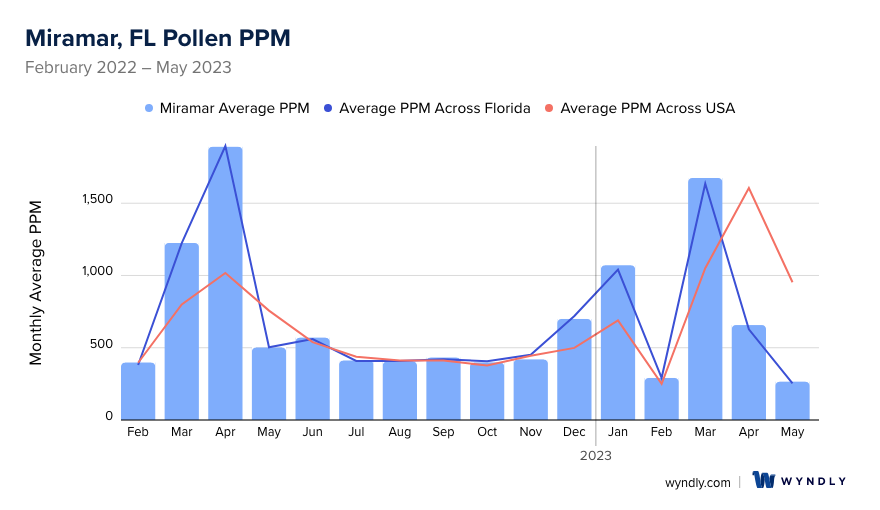
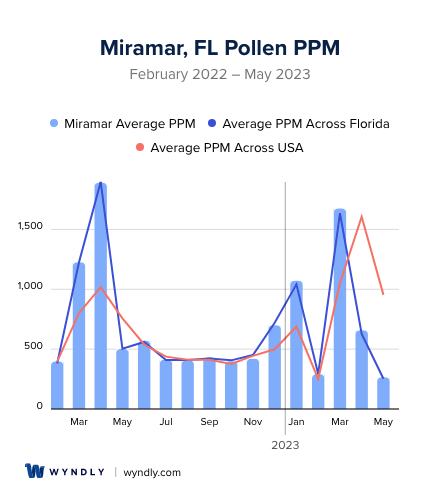
Miramar, FL Pollen and Allergy Breakdown by Month
Grass
When is grass pollen highest in Miramar, FL?
April has the highest grass pollen in Miramar, FL with an average PPM of
When is grass pollen lowest in Miramar, FL?
December has the lowest grass pollen in Miramar, FL with an average PPM of
Tree
When is tree pollen highest in Miramar, FL?
March has the highest tree pollen in Miramar, FL with an average PPM of
When is tree pollen lowest in Miramar, FL?
July has the lowest tree pollen in Miramar, FL with an average PPM of
Weed
When is weed pollen highest in Miramar, FL?
June has the highest weed pollen in Miramar, FL with an average PPM of
When is weed pollen lowest in Miramar, FL?
February has the lowest weed pollen in Miramar, FL with an average PPM of
Miramar, FL Pollen Monthly Breakdown by Pollen Type




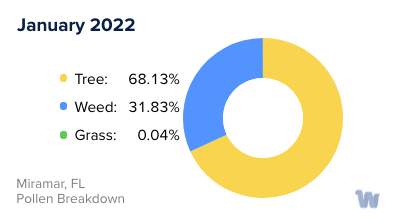


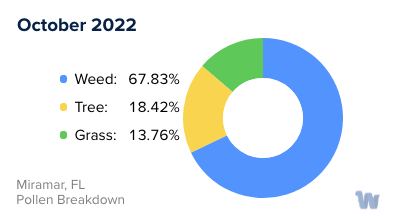
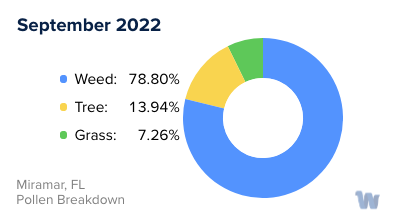



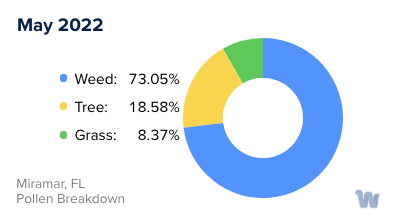
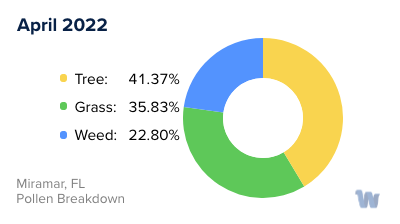
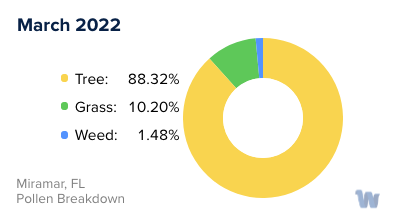

Pollen and Hay Fever in Miramar, FL
Pollen allergies, commonly known as hay fever, are prevalent in many parts of the world, and Miramar, Florida, is no exception. With its lush landscapes and diverse flora, this city can present a challenging environment for those sensitive to pollen.
Pollen, the fine powder produced by plants for fertilization, is carried by the wind and can easily end up in our noses and throats, triggering an allergic reaction. In Miramar, a variety of plants contribute to the pollen count, each having its own blooming period.
Oak trees, one of the leading sources of pollen, usually release their pollen in the spring. Miramar's oak trees, with their distinctive sprawling branches and generous canopies, are beautiful to behold but can be problematic for those with pollen allergies.
Grass pollen, which can be equally troublesome, typically peaks during the late spring and early summer. Bahia and Bermuda grass, common in Miramar, are prolific producers of pollen.
Ragweed is another significant pollen source and is a common plant in Florida. Its flowering season extends from late summer into the fall, thus prolonging the allergy season for many residents.
Each type of pollen has its own season, which means that Miramar residents may experience hay fever symptoms at different times throughout the year. It also means that, unfortunately, there can be considerable overlap, with one pollen season segueing into the next, causing prolonged discomfort for allergy sufferers.
In conclusion, the year-round mild climate and rich biodiversity of Miramar, Florida, make it a beautiful place to live, but it can also lead to a variety of pollen allergies. By understanding the types of pollen in the area and their respective seasons, those affected can better anticipate and manage their symptoms, even if that just means being prepared for a sneeze or two.

